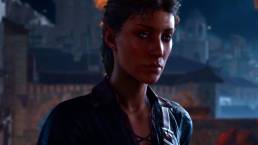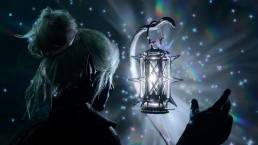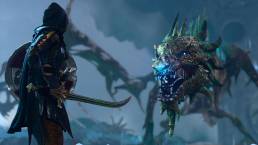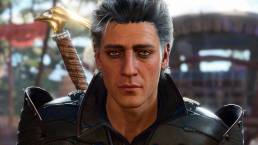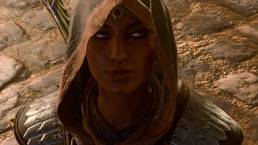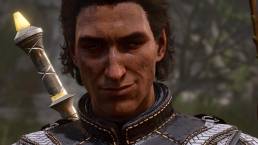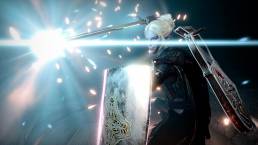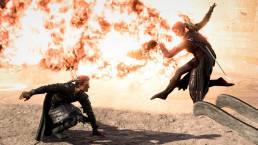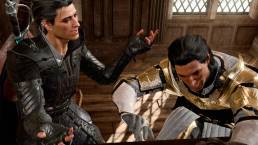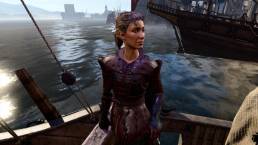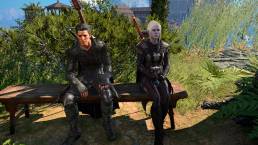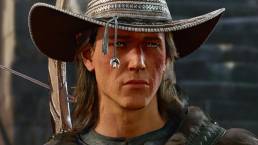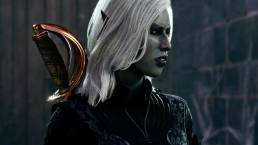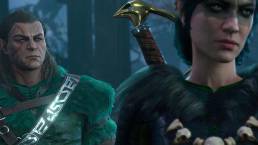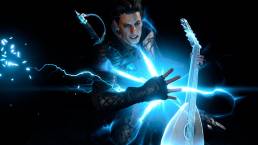
Twenty months after downloading Larian Studios’ 2023 masterpiece, and only a bit longer after I’d sworn I’d never play D&D as a video game, I’m still addicted to Baldur’s Gate 3. For better and worse, it’s become one of my main hobbies over that time—inspiring some outside creativity but severely curbing my cycling exercise—with no sign of slowing down. Further customization mods and a limited photo mode in the game’s two most recent patches have kept the needle in my veins for sure.
I’d like to think this compulsion persists because I get to keep creating/refining my own D&D heroes, and not because it’s an addictive video game where, recently, I’ve played my characters more often than in their original tabletop setting. It’s probably the latter, but at least I’ve made it worth my time by fleshing out their backstories via Tumblr and banking many gigabytes worth of screenshots. I tell myself it’s all in service of making these characters more real, so humor me with a second quick survey of what I’ve made and how I’ve made it.
Cutscenes: Hair-Trigger Screenshots
I’m a Mac user, which is great for my professional design work but is far less ideal for video games. That’s fine—while I’ll never say never, I likely won’t download more games anytime soon. However, my screenshot options were super-limited compared to PC users. Custom photo/lighting mods helped those folks get methodical with their imagery. They could, for example, swap various characters into different scenes to create amazingly complex shots, or make characters do things they never would in the original plot.
I didn’t have such luxuries, but I could still get worthy character images. I developed a hair-trigger “command-shift-3” response to the game’s many cutscenes—cinematic plot points outside of regular play—and accrued a dragon’s hoard of lucky surprises. “Lucky” because even though the cutscenes were repeatable, the individual screencaps weren’t. That didn’t mean I couldn’t make those screencaps look good; without ReShade or similar editing apps, I defaulted to my two decades’ worth of Photoshop skills for retouching and editing.
Custom Mods: Faces, Dyes, Gear
In late 2024, BG3’s Patch 7 added a limited set of “modding” resources for players on Mac and console, so I could finally outfit my characters with better gear, additional dye options, and even (in two cases) alternate faces to make them look more like their 5e portraits. My adventurers could ditch the weak, ugly gear with which D&D has always ritually-humiliated Level 1 players, but within reason. Macs still can’t do what modders call “transmog”—changing an item’s appearance if not its function—but that’s a minor quibble. What’s most important is that my faves won’t be stuck in the wilderness wearing ridiculous things like clown suits or pristine ballgowns.
The toughest thing about working with mods is wading through the crap to find something worthwhile. Third-party tools are like that. I definitely got distracted by the more game-breaking cheats and exploits, especially the ones that manipulated plot or warped characters to different parts of the story that were wildly out of sync with their current progress. Once I got that impulse out of the way, it was easier to pick and choose a few critical mods to keep, and ignore the rest. That was made easier by avoiding the heavier (file-size-wise) mods for the sake of my laptop’s performance; it was already straining under the massive operational requirements of the base game.
Photo Mode: Limited But Useful
When BG3’s eighth patch added Photo Mode, my initial impressions weren’t positive. It was substantially weaker than the modded tools, such as Native Camera Tweaks, that folks were already using with their PCs. Its camera was difficult to work with and its lighting effects were utterly basic. It seemed tailor-made for jokey shitposting with ugly frames and silly stickers. Its output was tied to display settings, so everything exported to low-resolution. Most disappointing was the inability to freeze cutscenes.
I wasn’t out to create Serious High Art—I just wanted cool high-res portraits or action shots of my characters—but I still felt let down by my own expectations. Other players were making impressive images, so I could see what was possible and soon worked around the tool’s limitations, getting methodical enough to fumble toward usability. Basic ideas like gimbal positioning and depth of field are still clunky for me (it’s been several decades since my one high school photo class), but I focused on one idea at a time. Eventually I made better-quality images of overworld screencaps, used dark backdrops to highlight spell effects, and staged events from my own homebrew 5e lore.
Anything to Make Them Real
Like every other intense enthusiasm I’ve ever had, I’ll probably burn out on this sooner or later. The previous tangents of this same “builds character” project—HeroForge, Midjourney, even Lego—have fizzled out. I’ve already begun purging many outdated save files from old BG3 sessions circa 2023-2024, and will likely do the same with most of my screenshots. I’ve narrowed down this project’s focus to eight characters and will maybe even go down to four of them moving forward. Anything that doesn’t help flesh out their personalities or stories is fair game for deletion.
As expansive as my experience was with this game, it’s still consumption as opposed to creation, and after more than a year of getting fat on all this inspiration it’s high time for me to make use of it. Other than these images, some minor distractions, a song lyric or two, and dozens of Google Docs’ worth of backstory notes, I don’t have real concrete creativity to show for it. That doesn’t mean it’s not a healthy creative outlet, but I’ve gotta get moving with something. Ideally that will mean knuckling under to complete a second fantasy atlas, and if anything I’ve made here fits that project, lore-wise, then none of this will have been wasted time.

